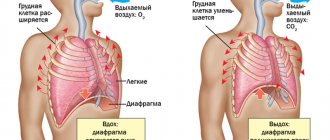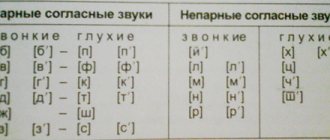Perhaps every modern person has heard of photographic memory - the ability to instantly remember large amounts of data presented on visual media. This skill allows you to receive information better, so many parents would like to instill it in their child. But most people are sure that instant memory of what they see is just a phenomenon, and it is impossible for an ordinary person to achieve such a level. In this article we will try to figure out: “How to develop photographic memory? And is it possible to do this?
Child's memory
In the modern world, education plays a vital role. How well a person will receive it largely depends on the ability to productively assimilate the information received. Since we begin to learn from an early age, it is important to develop a child’s memory from childhood. There are several types of it:
- Visual. We most often use it to receive and remember data about the world around us. It is this that allows us to absorb large amounts of knowledge from books and electronic media. It is a fundamental factor for high-quality receipt and memorization of information in various disciplines of schools and universities.
- Auditory. The ability to perceive information by ear is available to us from early childhood. When a baby is born, he is not yet able to focus on surrounding objects, but he perfectly remembers the voices of loved ones. When a child grows up a little, it is thanks to hearing that he remembers the sounds that animals, nature, and transport make.
- Motor or motor. It allows a person to know how to correctly perform a particular physical action. We don’t think about it when we write in a notebook, since our muscles remember what movements must be followed to draw a particular sign. Thanks to this, we perform many actions mechanically, because they are honed and reinforced in practice.
- Olfactory, tactile and gustatory. These types of memory allow us to remember various pleasant and not so pleasant sensations: what a lilac smells like, what a watermelon tastes like, how painful it is if you prick yourself with a sewing needle. Thanks to such information, a person manages to exist safely in the world around him, avoid dangers and strive for his own comfort.
Workouts for children
A child may not develop as quickly as his parents would like. Much depends on individual characteristics and genetic predisposition. Therefore, some children have rather weak visual memory, which must be improved. The easiest way to do this is with the help of special exercises that arouse their interest.
Exercise 1
The first type of training is very effective for developing visual memory and attention in young children who have not yet started school.
The essence of the training is as follows:
- Parents lay out a pattern of matches and buttons and show it to the child for 10 seconds.
- The child must create the same image without referring to the parents' pattern.
If it is too difficult for the baby, then the task can be simplified by reducing the number of elements. You can also use other items instead of matches and buttons.
Exercise 2
Training with this method is more like a game. Before performing it, parents must prepare cards with different stars, which differ in internal patterns and sizes.
The exercise goes like this:
- Parents give the child one star for 10 seconds to look at, and then take it away and mix it with other cards.
- Next, they lay out all the cards in front of the child, and his task will be to find an already familiar star.
It's best to start with 6 cards, but you can make many more. It all depends on the age and abilities of the child.
Exercise 3
This is one of the most favorite exercises for children. To complete it, parents must find any picture that has many different elements.
The training is carried out as follows:
- Parents show the child a picture for 30 seconds.
- After that, it is removed and the baby is asked questions regarding what he saw.
Questions may be about the quantity of certain things, their colors, location, etc.
Exercise 4
The difficulty of this exercise is determined by the parents, taking into account the child's skills. They must draw 3 different trees in advance, consisting of geometric shapes.
You need to do the training like this:
- Parents show the child a picture with 3 trees for half a minute.
- The child’s task will be to draw the tree whose number the adults will name.
To complicate the task, you can use different colors. But this is recommended only for schoolchildren.
Exercise 5
A very simple workout that is suitable for preschoolers. Parents should collect small cards of different colors in advance. It is important that the colors are as distinct from each other as possible.
How to do it:
- Parents lay out the cards in a certain order and show them to the child.
- After 10 seconds, the cards are closed, and the baby must remember their order.
If the child cannot cope with the task, then it is allowed to reduce the number of cards, as well as replace the colors with numbers or pictures.
You can also use simpler tasks. For example, give a child two similar pictures in which you need to find the differences.
Visual memory - what is it?
Visual memory is most often used by a person when receiving information. From childhood, a child examines the world around him and learns its diversity with his own eyes. When he enters the first grade, it is thanks to her that he receives most of his knowledge: from the school board, from textbooks and teaching aids, the child learns mathematical formulas and rules of the Russian language, gets acquainted with literary works and paintings by world-famous artists.
How well a child’s ability to remember is developed directly determines his academic performance. Children who are poorer learners have a harder time than their peers because they spend more time doing class exercises and preparing homework.
A well-developed visual memory is the key to a successful future for a person. Those students who are able to memorize information easily prepare more effectively for passing final exams at school for admission to a higher educational institution. At a university, a student is also faced with large amounts of knowledge in various subjects, which he simply needs to learn and consolidate. Therefore, it is important to develop skills in receiving and processing information.
There are many exercises on the Internet that, according to their creators, can improve visual memory. However, most often, they do not provide a systematic approach, which is simply necessary for such activities. It is important to understand that the highest result of the development of visual memory is the ability to instantly remember what you see down to the smallest detail, as if photographing and storing what you saw in the depths of your own mind.
Development of motor memory
To develop motor memory, you can play “puppet”. The child stands calmly, and the adult controls his arms and legs, forcing him to go right, left, forward. Then the child is asked to repeat the movements from memory.
You can also use the game “Do as I do.” The teacher makes the movements, the child repeats after him.
Developmental activities for preschool children
Photographic memory in a child
Photographic memory is a high level of development of visual memory, at which a person is able to remember and reproduce in detail previously seen images in his mind. People with it are able to receive and process information at amazingly high speeds: they only need to look at the page of a book to remember it, and then retell the text in great detail.
Many scientists studying the work of intelligence are struggling to unravel such a phenomenon as photographic memory, as well as the possibility of its development. It is believed that many famous people owned it: Nikola Tesla, Theodore Roosevelt, Sergei Rachmaninoff. But it is a mistake to believe that possessing this skill is only a lucky coincidence, a feature of genetics. Perhaps some people are truly lucky to be born with such an amazing ability to remember information, but often photographic memory is the result of working on oneself.
It is quite natural that parents would like to develop such a skill in their children. The ability to easily assimilate and apply knowledge will make it easier to complete training and successfully move up the career ladder. Considering that a person is best equipped with skills acquired at an early age, it is better to develop a child from childhood. But is it possible to develop photographic memory, and how can this be done quickly?
There are a number of techniques that offer various exercises for developing this area of intelligence. Many of them have proven their effectiveness, which means that a modern child can develop visual memory to the level of photographic memory, but this cannot be done quickly. It is also important to choose the right training program so that your efforts are not wasted.
Types of memory
Development of memory in preschool children. There are several types of memory.
- motor,
- emotional,
- verbal-logical,
- figurative.
In turn, it is necessary to note involuntary memory, when images and objects are remembered as if by themselves, without any effort, and voluntary, when a diligent process of memorization is underway. Involuntary memory is typical for younger preschoolers. Older preschoolers are already beginning to master voluntary memorization.
Emotional development of a preschooler
Ways to develop photographic memory in children
In order to develop the ability to quickly remember information, there are a huge variety of different exercises. They can be simple, for the youngest children, or more complex, for older children and adults. Let's look at the most popular exercises:
- Exercises related to observation. There are a large number of variations, but the essence of these exercises is approximately the same: a person focuses on an image (a picture in a book or the Internet, an advertising brochure, a sign on the street), tries to examine and remember all its details as much as possible. Then you need to close your eyes and try to recreate the image, and then compare it with the original.
- Exercises for visualizing information. It is necessary to select associations with the images. This exercise allows you to speed up the recall of previously learned information.
- Sequence memorization exercises. You can take a numerical expression, a mathematical formula, or just a set of different symbols, try to remember it, and then recreate it on paper. For this exercise, it is important to use sequences of signs that would be unfamiliar to a person.
- Exercises related to rearrangement. To complete this exercise, you can prepare the necessary materials yourself. You need several cards of the same size with different images. Place them in a random order on the table, take a photo of the result, then mix them and try to recreate their original order. Compare with photo. There are also many variations of this exercise on the Internet.
Undoubtedly, these exercises can help improve the ability to remember what you see. But, unfortunately, their implementation cannot be compared with a structured, consistent approach to developing this skill. In addition, it is difficult for a child to study independently and maintain motivation for a long time. For this reason, it is better to entrust children’s memory training to professionals - qualified teachers.
Today, there are many additional development centers that offer classes to improve a child’s memory. Give preference to those institutions that teach using original, time-tested methods. Over time, such activities will bear fruit: the child’s performance at school will increase, studying will begin to be easier, fatigue of the nervous system will decrease, since completing homework will take much less time. In addition, such courses are a good investment in the child’s future, in the development of his intellect.
Hobbies and mini-workouts
It is not at all necessary to use exercises that require a large amount of free time to develop visual memory. You can get by with short daily workouts or use your usual hobbies for this purpose.
Such methods will allow you to achieve results with minimal time. However, you should not expect particularly high efficiency from them. These options are perfect for those who just want to slightly improve the quality of visual memory or enhance the effects of basic exercises that are used every day.
Reading
The first way to train visual memory is reading. It also develops the classic skill of remembering information, increases vocabulary and improves intellectual abilities. For people who consider this type of activity to be their hobby, this option will be a real gift.
Any book will do to achieve your goal. They should be chosen based on their interests and abilities. If you wish, you can read a serious scientific paper or a textbook on a school subject that you once had problems with in the past. It is complex literature that brings maximum effect.
Drawing
Many children draw every day. This exciting activity has its own benefits, which, under certain conditions, can be used to improve visual memory. If a child engages in ordinary drawing, then his imagination develops, perseverance appears, and creative abilities are formed.
It is very simple to ensure that your child develops memory during classes. To do this, it is enough to ask him the rule that he needs to draw a place that is familiar to him or a well-known object. His goal will be to display the picture as accurately as possible with minimal deviations from reality. This method is suitable for a preschooler or elementary school student. If the task becomes more complex, it can be used even by adults.
Novelty
The simplest way to develop visual memory. It consists of filling your life with something unusual, with which you have never made eye contact. It could just be new places or sudden acquaintances.
This method is easy to use. You just need to go to work or other famous places along unusual routes that you have never been to before. You can also just walk in unfamiliar areas or even go to another city. At the same time, you need to make new acquaintances.
Memories
A good development of figurative memory can be obtained with the help of a simple exercise. It is best to perform it every day at home before bed. For some people, it will spark an interest that will make them want to pay extra attention to detail throughout the day.
A person's task is to simply remember his entire day in chronological order. This must be done taking into account all the smallest details, and you should try to find memories even of those things that you did not have to pay special attention to.
Portrait
Anyone who has met several people during the day can use this method. You will have to try to remember exactly what any of them looked like. If you managed to observe a passerby for a long time, then you need to remember all his actions.
“Portrait” is best used first on familiar people, because Trying to remember a random passerby from among the hundreds of people you encountered in a day is quite difficult. When it becomes easy, you can move on to strangers.
Examining the subject
The simplest mini-workout. It will require any item and a few minutes of free time. It is advisable to use things that you rarely come into contact with.
You just need to look at the object for a minute and then close your eyes. The task will be to mentally visualize what you see. You should try to remember the picture as clearly and correctly as possible.
Additionally, you can use your own personal mini-trainings, which require the use of visual memory.
Memory impairments and their causes
Experts distinguish two main types of disorders:
- quantitative,
- quality.
Quantitative disorders are a weakening of memory, loss of any fragments. With high-quality ones, false memories and fantasies come first, replacing reality.
The causes of memory impairment in children can be:
- mental retardation, often congenital,
- trauma, physical or mental,
- an atmosphere that is not comfortable for the child, where fear displaces everything from the child’s head,
- soreness of the body, including vitamin deficiency.









